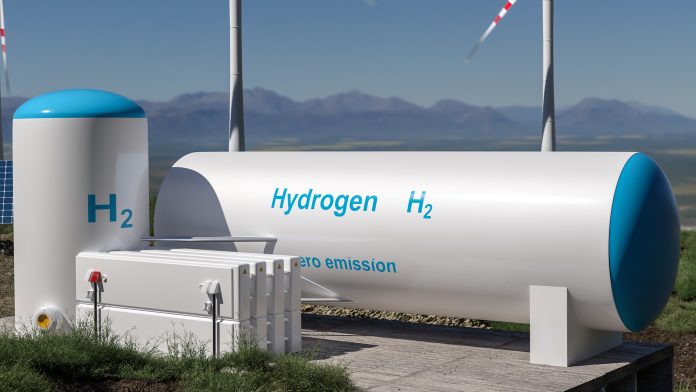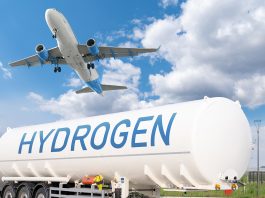A team of scientists from the University of Nottingham’s School of Chemistry and Faculty of Engineering have found a way to facilitate sustainable hydrogen production from metal waste.
In new research, the team found that the surface of swarf, a byproduct of the metal machinery industry, is textured with tiny grooves and steps on a nanoscale level.
These textures can anchor atoms of platinum or cobalt. This leads to an efficient electrocatalyst that can make hydrogen more sustainable by splitting water into hydrogen and oxygen.
The research is published in the Journal of Materials Chemistry A of the Royal Society of Chemistry.
Electrolysis is a promising pathway for hydrogen production
Hydrogen is a clean fuel that can be used to generate heat or power vehicles.
The only byproduct of its combustion is water vapour.
However, most hydrogen production methods require fossil fuel feedstock.
Electrolysis of water is one of the most promising methods for hydrogen production because it only needs water and electricity.
The challenge with water electrolysis
The industry is facing a challenge with water electrolysis. This is because it requires expensive elements like platinum to catalyse the water splitting.
As demand rises and prices increase, there is an urgent need for alternative electrocatalyst materials to produce hydrogen from water.
Dr Jesum Alves Fernandes from the School of Chemistry, University of Nottingham, who led the research team, said: “Industries in the UK alone generate millions of tonnes of metal waste annually. By using a scanning electron microscope, we were able to inspect the seemingly smooth surfaces of the stainless steel, titanium, or nickel alloy swarf.
“To our astonishment, we discovered that the surfaces had grooves and ridges that were only tens of nanometres wide. We realised that this nanotextured surface could present a unique opportunity for the fabrication of electrocatalysts.”
Scaling up the technology
The team used magnetron sputtering to create a platinum atom rain on the swarf’s surface. The atoms come together into nanoparticles that fit into the nanoscale grooves.
Professor Andrei Khlobystov, School of Chemistry, said: “Our unique technology developed at Nottingham, which involves atom-by-atom growth of platinum particles on nanotextured surfaces, has solved two major challenges.
“Firstly, it enables the production of green hydrogen using the least amount of precious metal possible, and secondly, it upcycles metal waste from the aerospace industry, all in a single process.”
The group will partner with AqSorption Ltd, a Nottingham-based company specialising in electrolyser design and fabrication, to scale up their technology.
The new work represents a step forward in reducing reliance on expensive metals for hydrogen production.









